Listen:
Check out all episodes on the My Favorite Mistake main page.
My guest for Episode #128 of the My Favorite Mistake podcast is Katie Anderson, a leadership coach, and the author of the book Learning to Lead, Leading to Learn: Lessons from Toyota Leader Isao Yoshino on a Lifetime of Continuous Learning — along with the companion workbook that she published.
Katie was previously a guest with Mr. Yoshino in Episode 30 back in January 2021.
In today's episode, Katie tells her most recent “favorite mistake” story about recording and producing the audiobook version of her book. What went wrong? How did she discover the problems?
Questions and Topics:
- Doing your best? Give it your best – Japanese word: ganbarimasu
- Root cause of the sound variation in the audiobook recording?
- Lean Blog Interviews podcast episodes with Katie
- Anxiety about talking about mistakes?
- Reflections on creating a culture where it’s safe to talk freely about mistakes?
- How can people learn with you, work with you?
- “Leading to Learn Accelerator”
Watch the Full Episode:
Quotes:
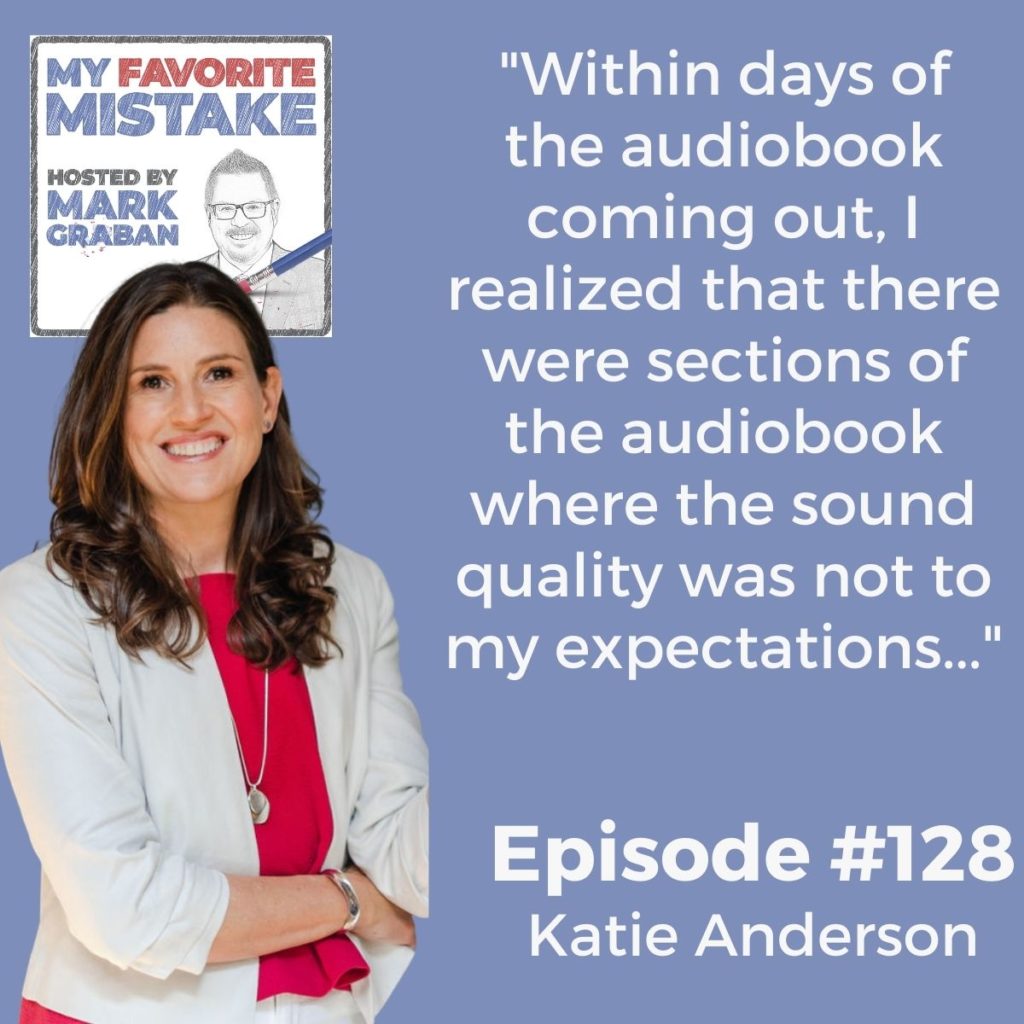
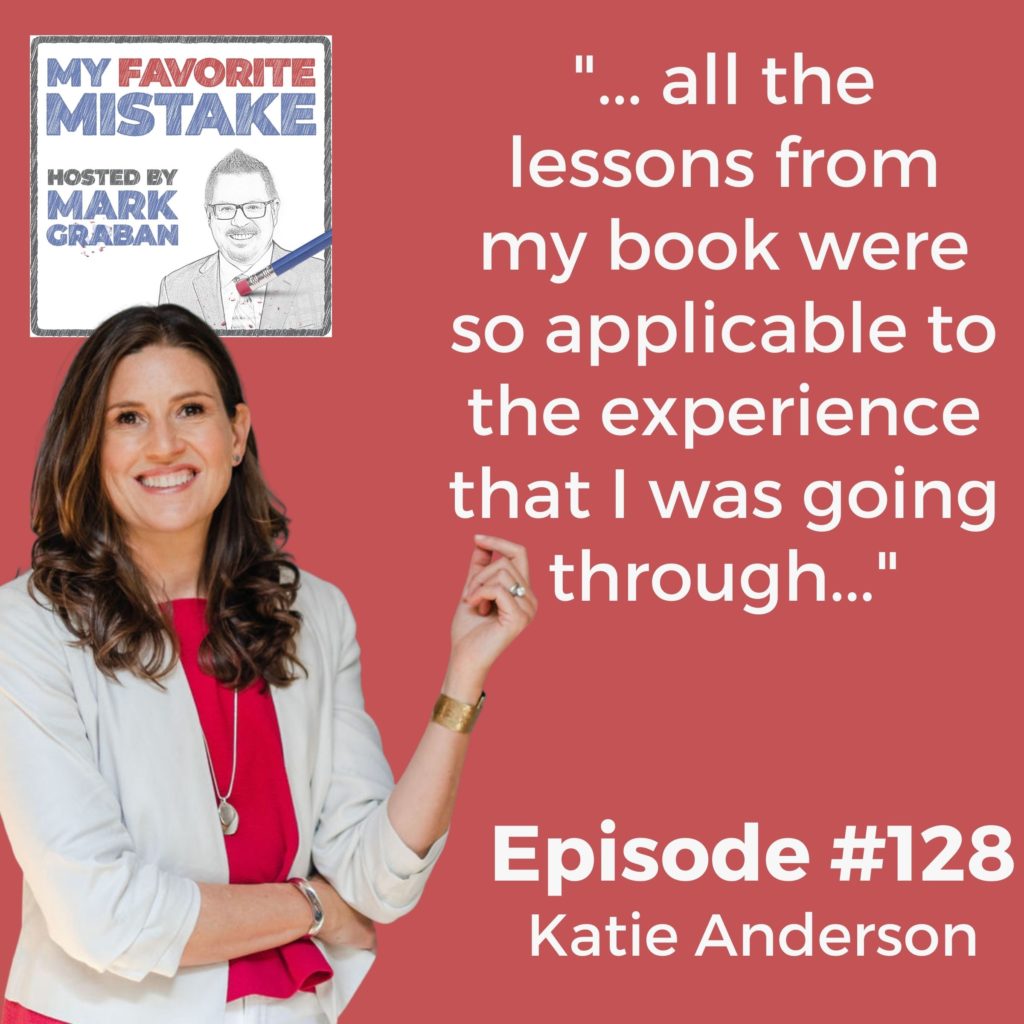
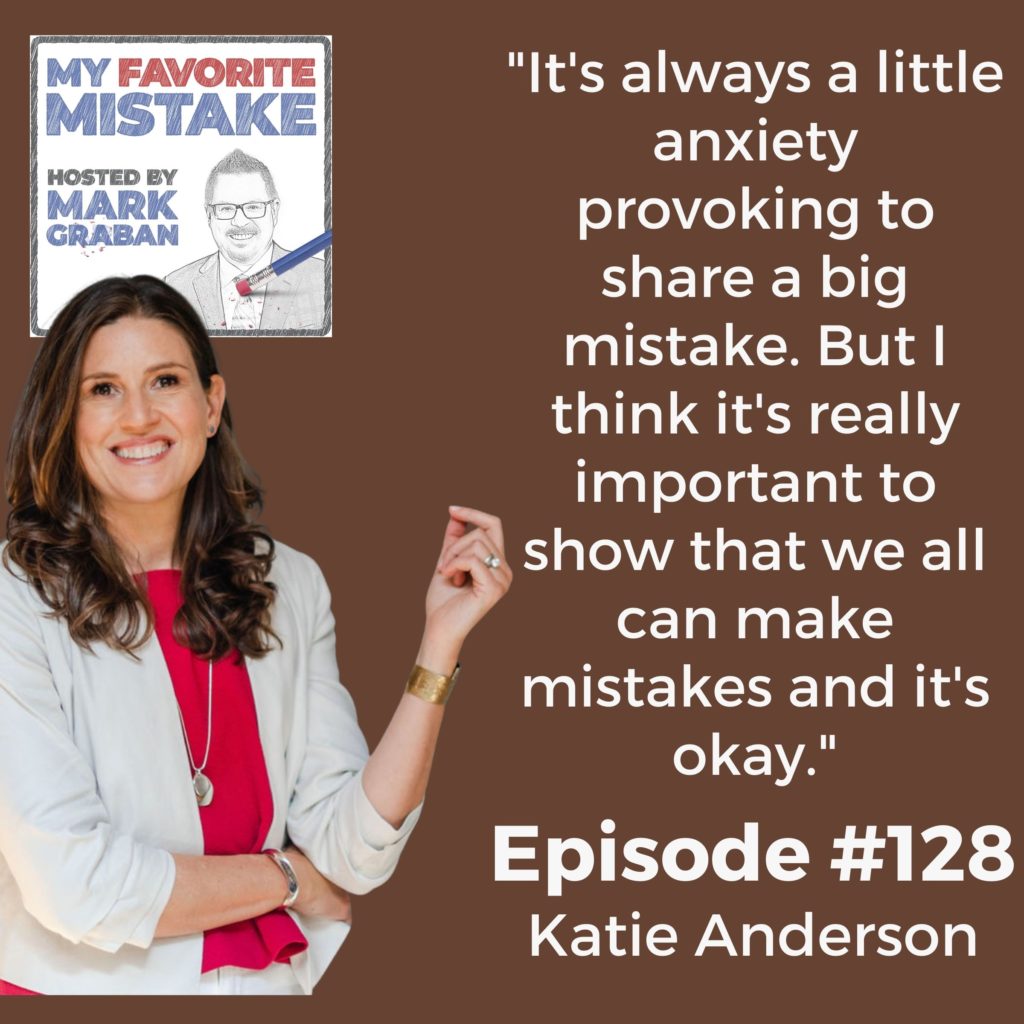
Subscribe, Follow, Support, Rate, and Review!
Please follow, rate, and review via Apple Podcasts or Podchaser or your favorite app — that helps others find this content and you'll be sure to get future episodes as they are released weekly. You can also become a financial supporter of the show through Anchor.fm.
You can now sign up to get new episodes via email, to make sure you don't miss an episode.
This podcast is part of the Lean Communicators network.

Other Ways to Subscribe or Follow — Apps & Email
Author Katie Anderson's Audiobook Mistakes And What She Learned In The Process
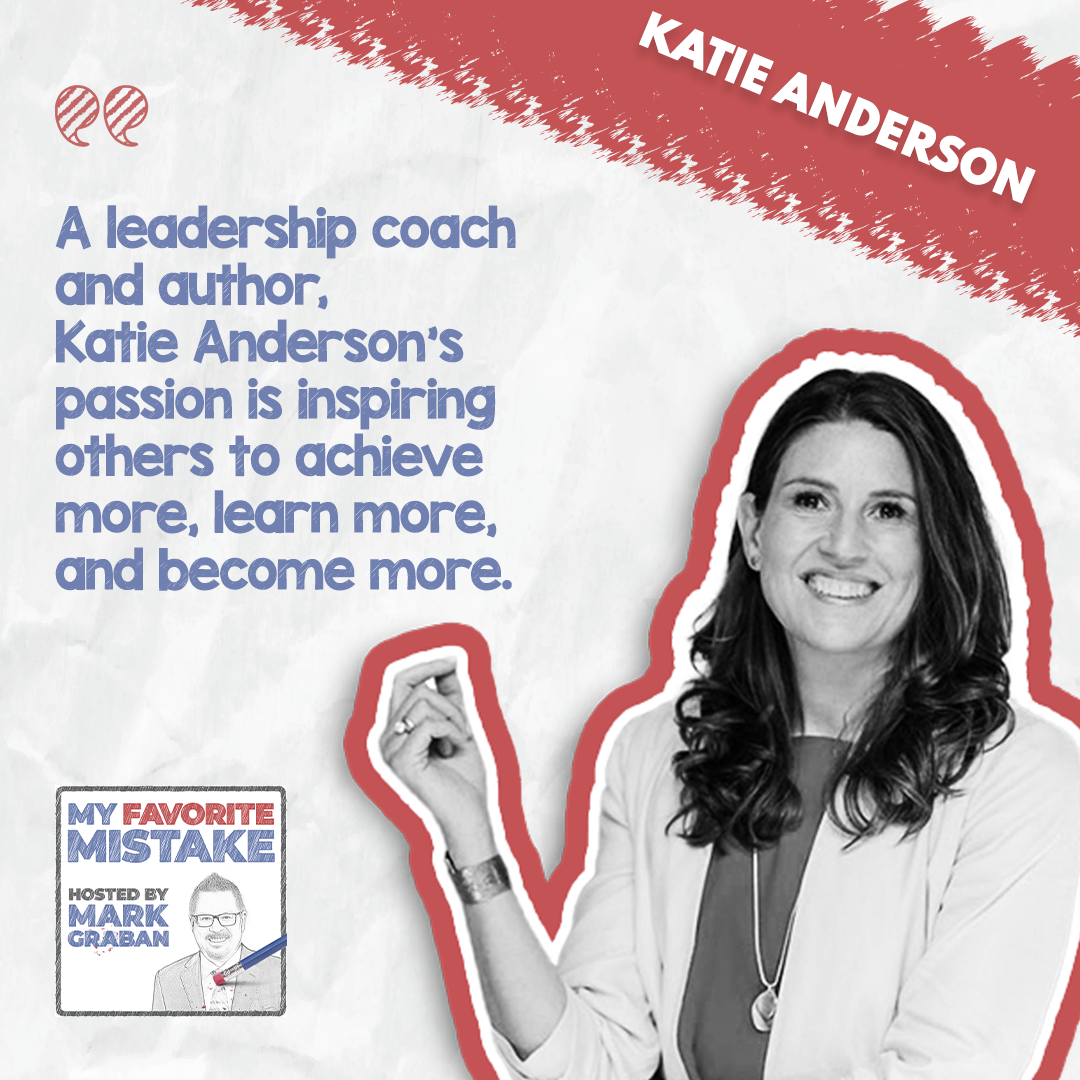
We have a returning guest. She is Katie Anderson. She is the author of the book titled, Learning to Lead, Leading to Learn: Lessons from Toyota Leader Isao Yoshino on a Lifetime of Continuous Learning. Katie was a guest with Mr. Yoshino back in Episode 30 in January of 2021. I encourage you to go read that if you haven’t already. Katie is a leadership coach. You can learn more about her and her work at KBJAnderson.com. Katie, welcome back to the show. How are you?
Thank you, Mark. I am thrilled to be here, and I’ve been looking forward to coming here and using this as a purposeful time for reflection and discussion with you about my recent, newest, and biggest favorite mistake.
A most favorite recent mistake.
I guess my biggest recent mistake, my most learned-from, and impactful, both mistake and lessons learned, it’s all now a success story. It’s a good story of learning and growth.
A part of me was sorry to hear that Katie had a story to tell, but like you said, you reflected on it and you learned from it as you talked about it back in episode 30 with the mistake that you shared with us from earlier in your career. I was going to let everyone know, this leads into talking about your story. Katie’s book, again, is Learning to Lead, Leading to Learn. It’s available as an audiobook and that leads us to what happened.
I had many goals for myself in 2023. The book, Learning to Lead, Leading to Learn, I published it in July of 2020, and that was super exciting in paperback and eBook. I always knew that doing an audiobook was on my list for 2021. I had the great experience and learning experience of recording it and producing it twice. That’s part of my mistake here that I want to share.
To set the context too, one of the interesting things for me through this whole experience was that all the lessons from the book were so applicable to the experience that I was going through. I was having this meta experience of relearning and rethinking the lessons from the book. As it applied to my life and as it related to reading the book and learning about the lessons. It was an interesting experience.
[bctt tweet=”All the lessons from my book were so applicable to the experience that I was going through.” via=”no”]
I recorded and produced the audiobook in the late winter and early spring of 2021, in the middle of the pandemic. We’re pretty shut down. That was a time when we still were being pretty conservative, not being out and about. I decided to record the audiobook in my home studio. I hired a producer to help me with this. I have my wonderful mic, but we set it up on a whole special boom and everything. We did some sound testing.
Recording an audiobook is a lot. I knew I wanted to record it as the narrator because of the personal story in relationship with me and Mr. Yoshino. It didn’t feel right to outsource that to someone else. I was doing my best and wanted to put my best foot forward. We recorded it. I was working with a producer to get it all done. My vision was to have it released on the one-year anniversary of the book. I was on your other show talking about the release, and that was super exciting.
However, I learned a few things through that process. Within days of the audiobook coming out, I realized that there were sections of the audiobook where the sound quality was not to my expectation. Of course, this shouldn’t have been a surprise, but it was for a few reasons. I’ll dive into that in my reflections. My heart sank. I was like, “I’ve spent twenty hours or more recording this.” We did rerecord some small bits of it as well, working on it, publicizing it, and getting it out there. I was so excited, and then to realize that there were some quality issues. It wasn’t like it was terrible quality, but it was things that weren’t up to what I would consider the quality grade that I would expect for an audiobook.
[bctt tweet=”Within days of the audiobook coming out, I realized that there were sections of the audiobook where the sound quality was not up to my expectations.” via=”no”]
What’s an example of that? I know from publishing through Audible, there are certain quality checks that they do about sound levels and some things. You passed that apparently, but what bothered you or maybe some of your listeners?
I want to be clear. There weren’t egregious quality issues. They were more of the fine-tuning quality issues where there was some discrepancy between some different sections. In some of the sections or chapters, it sounded like I was more in a bathroom. The mic wasn’t that good. It didn’t sound that great. Something that, for a 20 to 30-minute podcast, you wouldn’t think twice about, but in an audiobook where you’re listening for 8 hours, and you’re also purchasing it on iTunes or on Audible. Your expectation of the grade of the quality is different. I had that same expectation as well.
It was reminding me of one of the very first things I learned about Lean when I was first introduced to the concept of skosh back in 2006. When learning in the hospital system about the different grades of quality. It’s the grade that your customers expect. Some people don’t need the Ritz-Carlton experience, you just want a nice Best Western. This is from the slides and material that I was being taught at the time. I think that same thing was a lesson learned for me around that. I went into hyper mode. I had a few people reach out saying, “I love the audiobook, but some of the parts of the recording weren’t up to what I thought.”
I was going to ask if it was just your assessment or not. You did have some people reach out and say, “This is fun.”
Everyone loved the story, so that wasn’t the issue. People were like, “I enjoyed hearing your voice, but there were parts where the quality wasn’t up.” Within a week period, I had four different people reach out to me individually. I really appreciate that they all reached out to me individually as opposed to giving me a negative review on Audible. They all said, “We support you and we like the book.” I did take a listen and my heart sank.
I was just going on vacation, so I went into Hyperdrive and worked with my producer and my business manager to see if there was a way that we could improve the underlying audio quality of a few of those sections where there were problems. I came back from vacation and it turned out that there were some fundamental native audio quality issues. I had two choices in front of me. Either I could accept what it was and be out there, which isn’t a terrible choice, but that didn’t feel good for me about the quality of the material I wanted to be putting out there.
Now it was the middle of summer, so we were much more open in the middle of 2021. I’m looking to find a professional sound recording studio. Making a financial investment and an investment in my time, which I knew would be at least over twenty hours. To me, that was a no-brainer. As soon as I went to Hyperdrive, I was looking for different sound studios. I found one only 30 minutes from my house, which was amazing. He does audio music as well as audiobooks. He had a week available the following week when I got back from vacation. I said, “Book it in.” I booked babysitters. I cleared my calendar. I felt so good knowing that I was going to be able to correct this mistake, even though the current audiobook was out there. I was like, “You just have to let it be,” and I was going to do my best.
Once I went in and did the re-recording, it was so good that I was in a proper sound studio. I didn’t have all those sound interruptions and somebody was listening to the quality of the recording as I was doing it. We knew that the root cause of this problem was that there were fundamentally some issues with some of the tracks that I had recorded.
Maybe it didn’t matter because going to the studio would have prevented a recurrence of the root cause in your setting. How much time did you spend on that root cause analysis or you figured it doesn’t matter because you’re not doing it again on your own in your home office?
I did a little bit of root cause analysis for sure. The cause ultimately came to the fact that there was a problem with the sound recording. I didn’t go into what the problem was with the actual software we were using because there were some tracks that sounded great. They were super professional and high-grade quality. It wasn’t that the whole setup here was inherently bad that there was a mistake and it wasn’t mistake-proofed. I had to click a button somewhere in the software program to make sure it was connecting to my mic, but there was no positive feedback to say, “Yes, it was or wasn’t.”
This leads to the second challenge. Around the whole built-in quality and also the concept of “Pull the Andon,” there was a little bit of time lag between me recording it and the producer working on the tracks. I’ve been using this for all of my reflection and I’ve been talking about this in my Leading to Learn Accelerator programs, how the deeper reflection process upon say, “It shouldn’t just be the outcome and the actions, or even the process. We need to dive deeper into assumptions.” The assumptions, we were not even aware of. The unconscious assumptions that were unspoken assumptions that we had going into an initiative or to anything, and how did that impact the actions and outcomes?

I realized that I, as the leader of this project, had not communicated a few things or checked my assumptions. One of my assumptions was that we all had a shared understanding of the sound quality and expectations. I just assumed that that was there. Two, I made the assumption that if there were any problems, the concept of the Andon at Toyota stop the line and alert the quality issue at the source.
In doing some reflection with my producer, she realized that she was more focused on my target of the deadline date. There were definitely some quality issues where I recorded certain bits where there was a dog barking. We did that, but listening to the different tracks next to each other and hearing the contrast wasn’t part of the overall experience. I was making the assumption that we would know that and record it. She was also like, “It was probably fine.” There were some communication gaps and assumptions made there.
I want to be clear that I do not blame anyone for this outcome. I played a huge role. Part of my Hansei and reflection on this has been, “What was my role in this? How do we all learn from it and improve?” One of the most important things, and I was thinking about the book the whole time of this, is we all have an opportunity and choices in how we respond to mistakes and failures, or successes as well. That shows our character. It was important for me to look at the process, not blame the people, look at the role that I played too, and how my actions also contributed to the outcomes that we saw.
Those were some of the assumptions that I was making. She was making assumptions that the timeline was more important. Of course, I didn’t want to rerecord. I definitely wanted to rerecord rather than having a lesser quality product go out to my customers. It’s a lesson learned for all of us in that. Also, if I were to do this again for my home studio, I’d want to figure out how to mistake-proof that quality issue.
I learned early on too, and that’s when I first bought this in the beginning of the pandemic. There’s a little green light. I was doing Zoom calls, and I was like, “That means it’s working.” It just means the power is on. It doesn’t mean that Zoom has connected to my microphone. I did a few sessions and I was like, “This mic is terrible.” I realized it’s actually not the mic. I didn’t even check before we went into here, so hopefully, it’s connecting to my mic.
I’ve seen sometimes people with a Yeti mic or something, they’ll have it facing the wrong direction, which can make a significant difference. I’ve made a mistake and basically, the best I can do is double-check every time, which leaves me prone to forgetting to check. I’ve got AirPods in that I’m using as the speakers. I have a microphone. It’s normally slightly off-camera. There are 1 or 2 episodes in this series where I was mistakenly using the AirPods as a microphone, which does not sound nearly as good. I’d rather have the authenticity of what I was saying in the moment, even if I’m stumbling through a question rather than going back, “I can rerecord it with a better mic and I can sound better, more slick, and more polished.” It’s a podcast. People go for authenticity over polish.
That’s the difference. The expectations of the sound quality for a podcast is different. I’m much more familiar with the printed word because we were more familiar in print. Audio is a whole another thing. I’ve learned a ton about audio. One of the lessons that I would’ve kept coming back to from the book and I want to read a short passage because the whole concept of learning from failure and mistakes is such an important part of the book.
On Episode 30 of My Favorite Mistake that Mr. Yoshino and I were on where he tells this story about his first major mistake at Toyota. That was the first bookend of a major mistake. The second was him leading a project that cost Toyota $13 million at the end of his career. I was holding President Cho’s words to Mr. Yoshino in my head around this. I’m going to read it. The first manager said, “Don’t worry, mistakes can happen. You are just a beginner and you did your best.” At the conclusion of his career, Mr. Cho said to him, “You were new to the boat business, and so are we at headquarters. We all make mistakes, particularly when we try something totally new. We know you took on a challenge and worked so hard to make it happen.”
I was reminding myself of that, too. This was a totally new thing to me doing an audiobook. I’m very familiar with podcasts and videos, but producing and recording an audiobook was new. It’s about thinking back of intentions and knowing that I was going to correct that mistake but to not beat myself up to it. I’ve been reading the back of your lovely mug, “Be kind to yourself. Nobody is perfect and we all make mistakes. The important thing is continuing to learn from our mistakes.” That is so true. The story continued to unfold a little bit more. It felt like I was in this whirlwind of crazy mistake-making. I want to share a few other lessons learned. Just because I think that for those of you out there thinking of recording an audiobook, this is helpful to know, too.

Before we go into that, let me ask you one follow-up question. You mentioned a couple of times and you defined it a little bit, Andon Cord in a Toyota plant. Above the assembly line, there’s literally a cord that’s hanging down and reachable. If you see a problem, if you make a mistake, if you drop a part, if there’s a defect that’s visible, pull the cord. I’ve heard it described, the culture is one where they say, “If in doubt, pull the cord.” It could be, there’s not really a problem, but better to air on the side of a problem.
To be fair to you, Katie, as you described yourself as project manager of the audiobook, Toyota has spent decades building that culture of, “If in doubt, pull the cord.” One of your lessons is to be very intentional and trying to create that culture within a project. That’s the problem with assumptions as you put it, right?
Assuming that everyone on the team came from that same background, of course, you’d highlight any problem or potential problem and make that out. Problems were highlighted and we corrected them, so I made the assumption that everything was good. Again, how do we, as leaders, set clarity of direction and uncover those assumptions both for ourselves and be clear on team members? I was communicating timeline with the assumption of quality and we should have talked about that. How do we support each other to make that happen? It’s been great learning for me from the leader of this experience and embodying everything about the book. It was so interesting.
I was going back to rereading the book. One of the other challenges for me is I have read this book so many times. Having written every word and then reading it again for twenty hours, you’re like, “I do not want to read it again or listen to myself reading it.” One of the lessons learned, too, and this was an assumption on my part is that an audio producer is also doing all of the quality checks. They do many different quality checks.
In the same way, you and I have talked about when you were writing a book, you have different types of editors. You have your developmental editor, content editor, and line editor, and then you have your proofreader. I assumed that was all part of what happened. I needed a proofreader and we didn’t have a proofreader. I didn’t realize this is my responsibility as the ultimate producer of this audiobook.
My business manager had spot checked a few parts of the audiobook, and I did too, but I don’t want to listen to 20 hours or 8 hours of me. No one loves to listen to their self anyway. A quick mistake was found out immediately upon publishing the first version of the audiobook. One of my friends and colleagues pointed out that there was part of the story and the paint story was missing. We were able to quickly get that up. There were some of those errors that weren’t caught. The error is humid and we need to spot-check these things.
When I redid it, I hired somebody independently who had never read the book to read and listen to the full audio track to catch any extra potential ums and uhs that were missed in the editing process to make sure that all the content was there. That was an additional step that I didn’t realize was part of the process. I needed a proofreader, which I would’ve known about. These are the small things that, if you’re looking to do an audiobook, there are a lot more steps than just recording it in your home studio. To give myself grace in the pandemic, I didn’t have many options to go into a recording studio in winter and there were more available. We’re all doing our best in a world of craziness.

I re-recorded it. We had a new editor coming in to do it, just for the seamlessness of this. I reached out to Audible and said, “What’s the process if I need to swap out? Is it possible for me to switch producer names to give different credit?” Audible, the person in India or whoever they were, shut down the book and removed it from production. People were getting errors on Audible saying, “This book doesn’t exist anymore.
Is that for people who are trying to buy it or people who had already bought it?
People who bought it had it, but people who were trying to buy it. It meant that if I was going to put up the new version, they had to be totally new. Simply, you can always update the files and then if people refresh them, they get the new version. I reached out to customer service and they’re like, “There’s nothing we can do. We deleted all the files. It’s gone.” I’m like, “I don’t think so. I have to think that they’re more quality controls.” Anyway, we call Audible and finally got ahold of someone on the phone and they’re like, “We can fix this.” It took 3 or 4 days, so the book was down for 5 or 6 days. I had three people reach out to me, “I can’t find your book. It’s saying it’s out of production.”
Anyway, all got corrected. I took a deep breath. Within three and a half weeks of rerecording the audiobook, it was up. I put out a big announcement. People could refresh it, and now close to 500 copies of the audiobook have been sold, and 21 overall five-star reviews. I’m feeling happy. The story was always great. People said they loved hearing my narration. A few people said, “It’s like having you in my ears.” Now I feel proud of the quality that’s out there. It matches my expectations. Most of all, I achieved a big goal in 2022 twice, and I learned a lot.
Most importantly, I’m proud of how I showed up in response to learning about a mistake and how I handled myself in dealing with my team members of looking at the process and not blaming people. Even though I felt frustrated, looking with greater reflection on the role that my actions played, the assumptions I made, and what we could all learn going forward. It’s always this little anxiety-provoking to share a big mistake, but I think it’s important to show that we all can make mistakes and it’s okay. Just like Mr. Cho said, sometimes we’re new to something. We don’t do it perfectly the first time, and that’s okay. It’s about how we respond to that, how we move forward, and how we show up as good people.
[bctt tweet=”It’s always a little anxiety-provoking to share a big mistake, but it’s important to show that we all can make mistakes and it’s okay.” via=”no”]
First off, thank you for sharing all of that. I’ve had trips to Japan. You’ve lived full-time in Japan for a longer period of time. On one of my trips, I may have heard about it before, but maybe it finally sunk in how important this phrase as translated into English of I did my best or I’m doing my best. That phrase pops up a lot in many different contexts. It seems like that is valued.
Legitimately giving it your best effort, the sense of obligation to do that, but then as you were describing this recognition of, “You did do your best. I’m not going to fly off the handle and be upset because what would that accomplish or is that fair?” Did you run across that phrase or that mindset about, “You do your best?”
The phrase it’s “Ganbatte,” which is the command form of “Ganbarimasu.” It means, “Do your best. Give it your best.” You’d say, “I gave my best to it all.” It’s used in school, on the playing field, or on the pitch. It’s used for anything. It’s about this concept of we all want to strive towards excellence, but it’s most important about doing our best in showing up and giving it a go, and then how we learn from it.
I feel like the “Ganbatte” and the concept of “Hansei” or reflection are important. Those two concepts are so linked in the Plan-Do-Study-Adjust cycle, or what I like to call the Study-Adjust-Plan-Do cycle because we need to remember the study to reflect and to learn, but also to give it a try. Not get stuck in just planning, but also give it our best, even though perfection isn’t achieved. What are we learning from it and continuously improving? That’s the real spirit of “Kaizen” or continuous improvement. It’s about having that self-discipline to improve ourselves for the better and giving it our best shot.
It seems like the idea of doing your best doesn’t become an excuse, but it seems like in the case of Mr. Yoshino’s story of putting responsibility where it’s fair for that responsibility to be. Mr. Yoshino made his mistake. My recollection of the story is that his manager of the organization responded and asked, “How is it we put him in that position and that the organization learned and adjusted, so that the next time somebody was a beginner in that situation, they wouldn’t repeat the same mistake Mr. Yoshino made?”
They not only didn’t blame him for that paint mistake when he was a 22-year-old new hire and 100 cars had to be repainted. They thanked him because it showed that they had an opportunity to improve the workplace for someone else in the future. I think that’s the spirit of Mr. Cho’s statement, too. “It wasn’t like you were new to the business. We too, as an organization, were new to the business. We had some responsibility here for also how it played out, so it’s okay.”
We talk about this in the book. They asked him to conduct some self-reflection or Hansei and presented at some management leadership meetings so that as they were continuing to expand into new ventures, this same mistake would not be repeated at the organizational level again as well. That’s the most important part.
Even as you shared in your most recent favorite mistake story, Katie, there’s maturity that leads to not blaming others, not flying off the handle, getting upset, stepping back, and having the maturity to reflect and move forward in a more positive way. How often do we hear different types of workplaces, people getting yelled at and screamed at? It’s one response to a situation. On some level, for the person getting upset, it might be a release, but I would argue it’s counterproductive.
This topic came out when we were in the last session of my Leading to Learning Accelerator. We’re talking about the boat story and learning from failure. Once a mistake is out there or a failure, it exists. You can’t change that, but you can change your response to it. You can have it be a learning experience, or you can try and correct the mistake and make it better for the future, which is what I did. It’s like, “How can I make this right and not blame people at the same time?”
There’s a quote from Mr. Yoshino, I’m paraphrasing it because I don’t remember it right now, although I should because I’ve read it so many times. “Blaming makes you feel good in the moment, but it doesn’t really help you in the long run.” We have to pay attention to that for ourselves. Blaming ourselves doesn’t help the situation either. Again, be kind to yourself as Mark Graban says on his mug.
I’ll give credit also to Karyn Ross. In collaboration with her, those bullet points were developed. Karyn has some of those mugs. Thank you, Karyn. Shout out to her. She was my guest in episode three of the show. One other thing that comes to mind referencing back to one of my other guest Cash Nickerson who stated it well, and this has stuck with me. There’s this balance between reflecting and thinking about what happened when you’ve made a mistake, but not taking it so far that you’re dwelling on it or beating yourself up. There’s a healthy amount of, “I’ve analyzed it. I’m going to change some things. I’m going to let it go and move on.”
I think that’s part of it, too. If you keep dwelling on it, then that’s counterproductive at a certain point, too. How do you learn from it and how do you move forward? I should have filled in a Daruma’s Eye, but this is back to my Daruma Doll, my massive collection. You have your little Daruma there, too. I should have filled in an eye for my audiobook. I’ll have to go back and do that. This is going to be my Daruma for my audiobook.
When you have a goal, you fill on the left eye. When you achieve your goal, you fill on the right. It’s falling down 7 times, get up 8. This one does it a lot better. Maybe it’s, “You fall down 2 times and you get up 3.” The most important is how are you getting up and moving forward. It’s not about necessarily always achieving your goal, but it’s about how you’re moving forward. Sometimes success is what you’ve learned rather than what you’ve achieved. Who you’ve shown up as a person, so your intentions, rather than the external success of achieving a specific goal.
This is a Daruma that Katie gave me. On the bottom, it says “January 2018” when I was working heavily on my book Measures of Success. My mistake, I filled in the incorrect eye initially, but the concept was there and this thing was staring at me, “Keep writing.” It was like talking to me a little bit. It was encouraging me which is I think the idea. Again, Katie’s book and the second attempt, better version of the audiobook is available now.
One of my other accomplishments in 2022 was publishing the companion workbook to the book. Look at how nice.
I recognize the Amazon pre-release.
Now it’s available in print on Amazon as well as on digital. A lot of things happened. A lot of things were achieved. A lot of mistakes and corrections. The most important part is, as I’ve been doing reflections, what I’ve learned and how I’ve shown up as a person. To be intentional and fulfill my purpose, and be the person I want to be, even when encountering challenges, setbacks, and mistakes.
That’s very nicely said. Again, Katie’s book is Learning to Lead, Leading to Learn: Lessons from Toyota Leader Isao Yoshino on a Lifetime of Continuous Learning. I encourage people to go check that out. You can find it on Amazon and Audible. Katie’s website is KBJAnderson.com. The final question is, we’re here at the beginning of 2022. The beginning of the year is a time when people inevitably are reflecting. They’re thinking about the past year or how they want to grow and develop, and what they want to do differently in the year ahead. Tell us about some of the programs that you offer through your website that people might want to go check out.
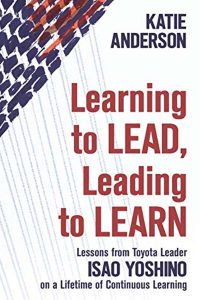
I feel like 2021 was a year of growth, creativity, and making things. One of the other goals and accomplishments was I developed a program that is complimentary to the book and the workbook called the Leading to Learn Accelerator. I am now offering it as two different tiers. One is fully self-paced, with all of the pre-recorded modules, the materials, the workbook, and all of that that people can learn from. The other is a live-facilitated community cohort, which I ran twice in 2021. We’ll be starting the next one in March of 2022. I’m excited about that. You can pre-enroll now for those programs. You can go to KBJAnderson.com/Accelerator.
Also, I have a bunch of different online programs that I’ve led in 2021 and we’ll be continuing to offer. If you go to the courses page on my website, some classes on social planning. How do you set your strategy and your goals for the year? There’s a session that Mr. Yoshino and I led in 2021 on that too, which is a great start to the new year. If you haven’t started your own personal goal setting, that’s a great opportunity for 2022 and more.
I love connecting with people, inspiring and enabling others to live and lead with intention. Creating, as what Mr. Yoshino and I say, a chain of learning, so how we link together. We’re all learners and leaders together. Our bonds are strengthened through the learning that we can have together. Thank you, Mark, for being such an important part of my chain of learning for well over a decade now.
Thank you, Katie. As you said, it’s a chain of learning. The reflections, the stories, and everything in the book are interesting, helpful, and inspiring to me. It prompts my own reflection.
Thank you as well.
Great to have you back here on the show.
Thank you for allowing me the space to reflect, share, and learn together.
Thanks again to Katie Anderson for being a guest here on My Favorite Mistake. As always, I want to thank you for tuning in. I hope this show inspires you to reflect on your own mistakes and how you can learn from them, or turn them into a positive. I’ve had audiences tell me they started being more open and honest about mistakes in their work. They’re trying to create a workplace culture where it’s safe to speak up about problems because that leads to more improvement and better business results. If you have feedback or a story to share, you can email me at MyFavoriteMistakePodcast@Gmail.com. Our website is MyFavoriteMistakePodcast.com.
Important Links
- Learning to Lead, Leading to Learn: Lessons from Toyota Leader Isao Yoshino on a Lifetime of Continuous Learning
- Episode 30 – Previous Episode
- KBJAnderson.com
- Leading to Learn Accelerator
- Karyn Ross – Previous Episode
- Cash Nickerson – Previous Episode
- Measures of Success
- MyFavoriteMistakePodcast@Gmail.com

